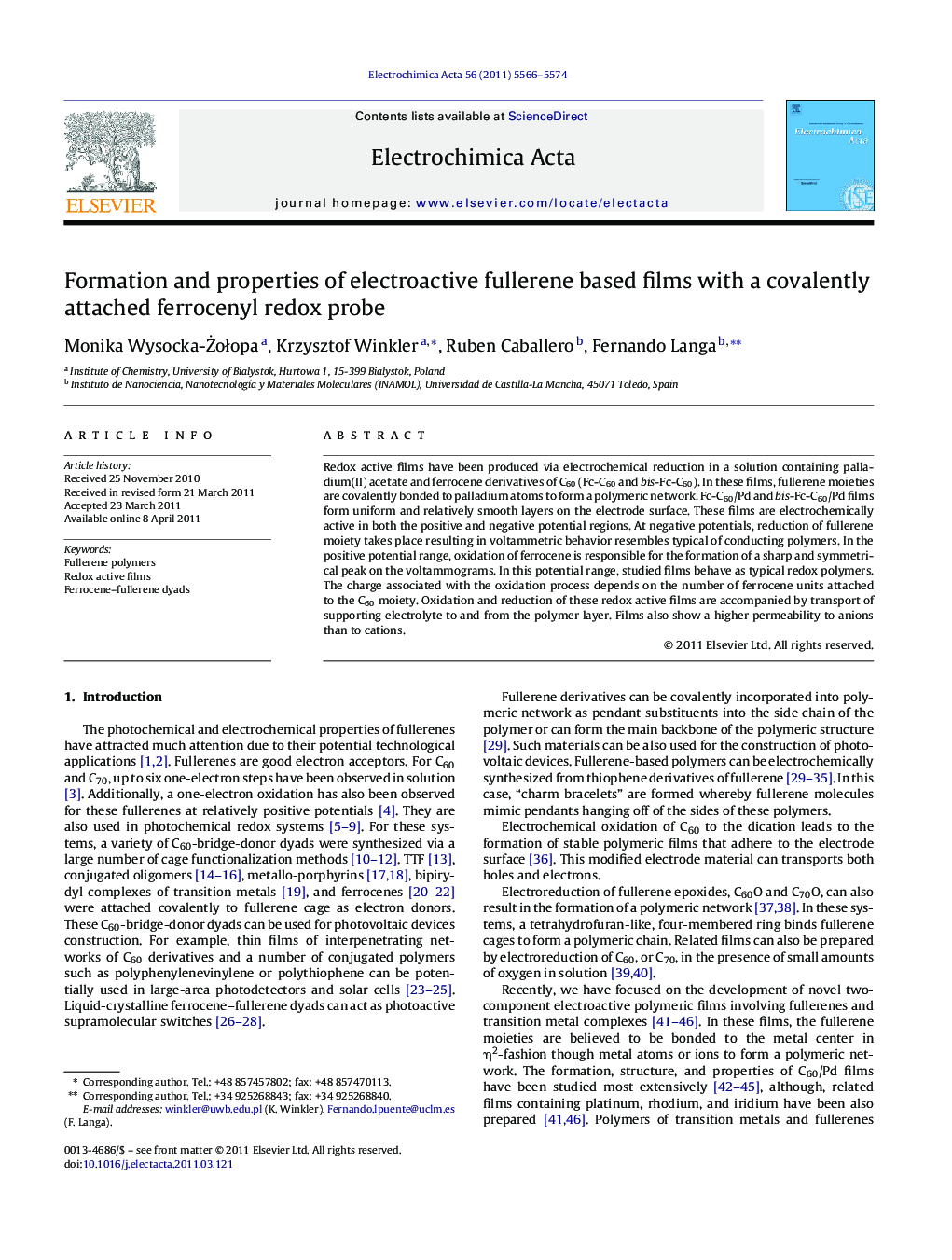| Article ID | Journal | Published Year | Pages | File Type |
|---|---|---|---|---|
| 189484 | Electrochimica Acta | 2011 | 9 Pages |
Redox active films have been produced via electrochemical reduction in a solution containing palladium(II) acetate and ferrocene derivatives of C60 (Fc-C60 and bis-Fc-C60). In these films, fullerene moieties are covalently bonded to palladium atoms to form a polymeric network. Fc-C60/Pd and bis-Fc-C60/Pd films form uniform and relatively smooth layers on the electrode surface. These films are electrochemically active in both the positive and negative potential regions. At negative potentials, reduction of fullerene moiety takes place resulting in voltammetric behavior resembles typical of conducting polymers. In the positive potential range, oxidation of ferrocene is responsible for the formation of a sharp and symmetrical peak on the voltammograms. In this potential range, studied films behave as typical redox polymers. The charge associated with the oxidation process depends on the number of ferrocene units attached to the C60 moiety. Oxidation and reduction of these redox active films are accompanied by transport of supporting electrolyte to and from the polymer layer. Films also show a higher permeability to anions than to cations.
► Formation of redox active films of ferrocene derivatives of C60 and palladium. ► Fullerene moieties are covalently bonded to palladium atoms to form a polymeric network. ► Electrochemical activity at both positive and negative potentials. ► Charge transfer processes accompanied by transport of supporting electrolyte to and from the polymer layers.
